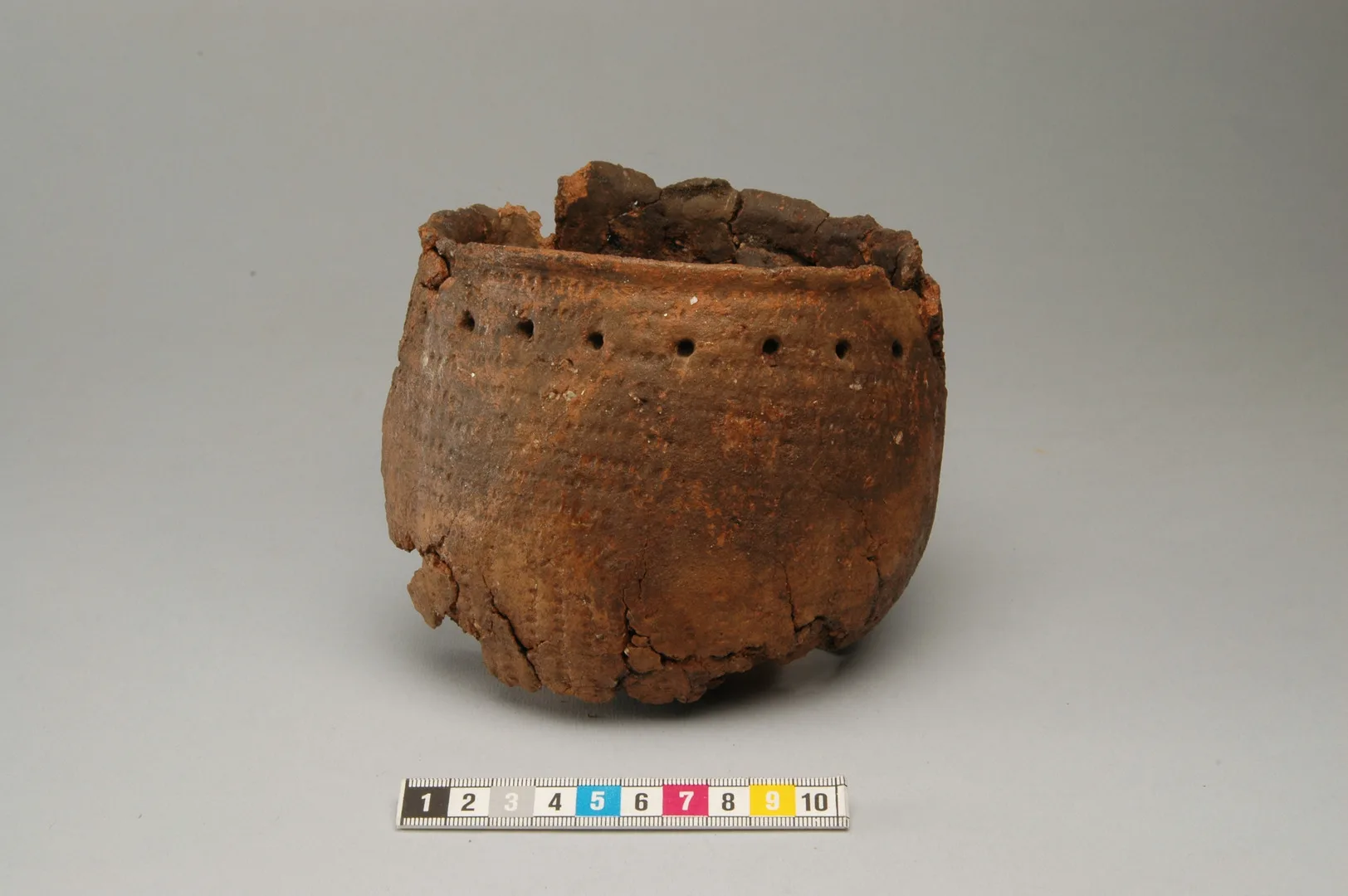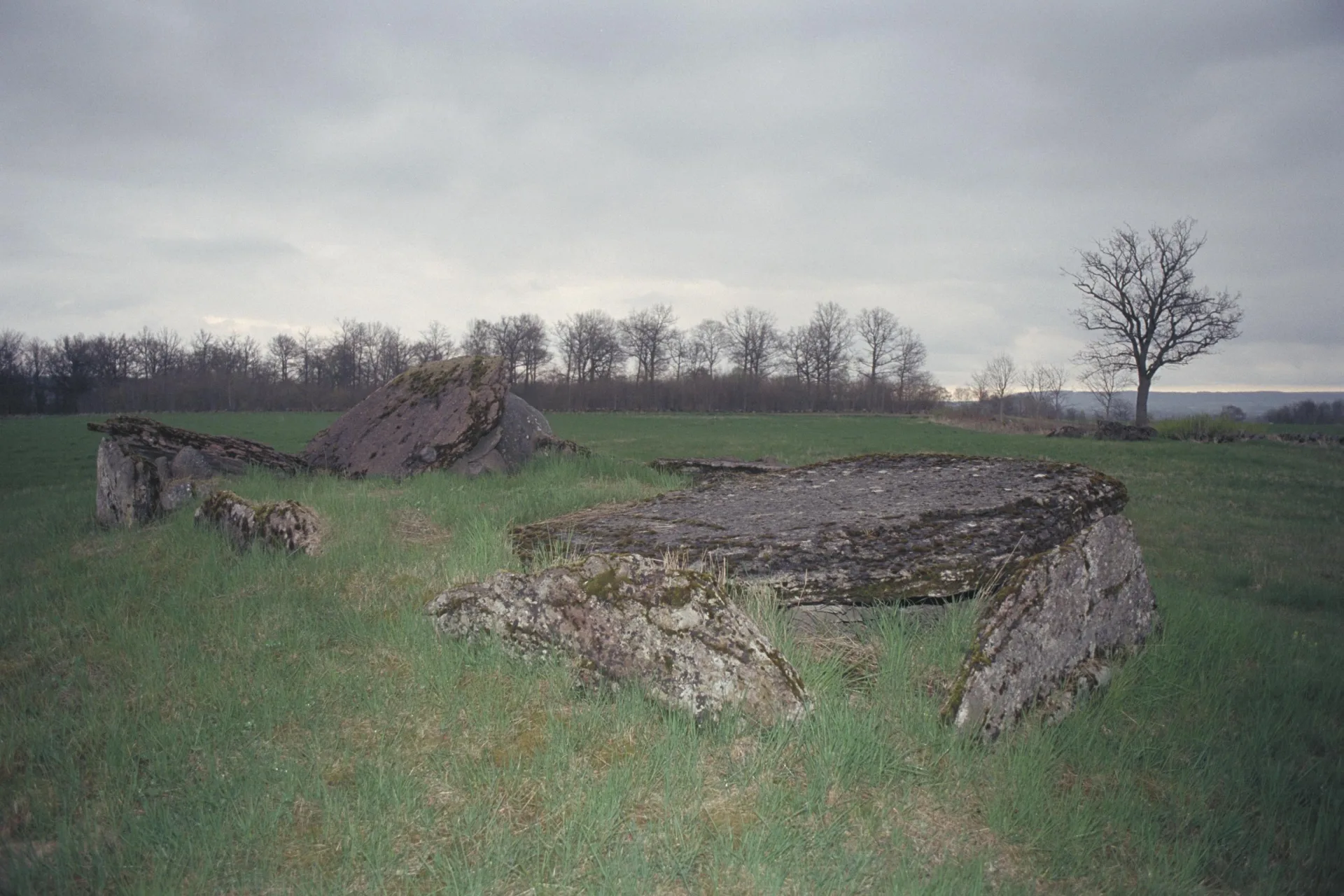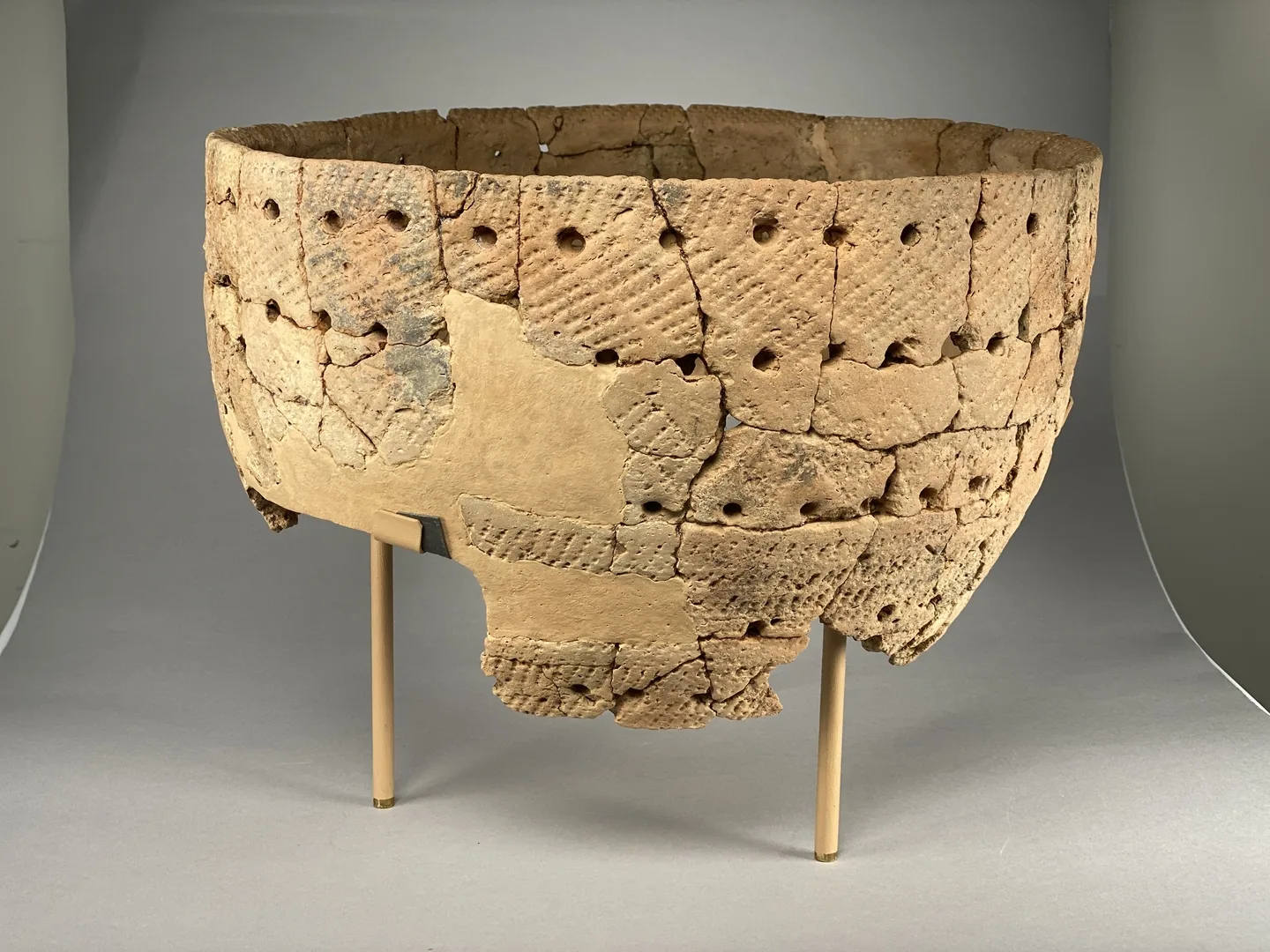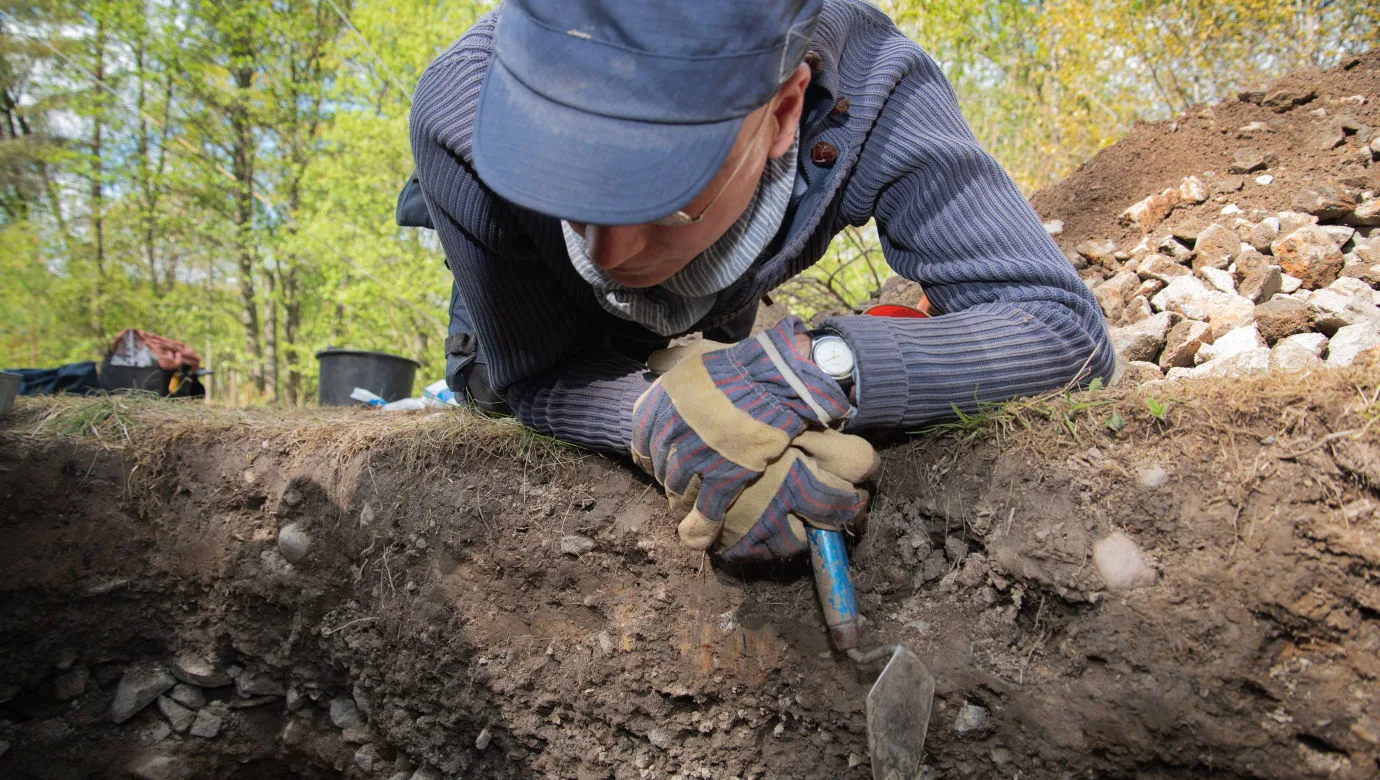Stone Age design – ceramic art
Stone Age
12,000 BC – 1700 BC
Bronze Age
1700 BC – 500 BC
Iron Age
500 BC – AD 1100
The site was uncovered at Gläntan in Turinge parish, located in Nykvarn Municipality, Södermanland. The structure unearthed has been dated to around 2300 BC, placing it right at the turning point between what archaeologists refer to as the Middle Neolithic and Late Neolithic.
At the time, the house stood on a ridge at the tip of a small bay. Along the walls of the structure, a total of twenty pits were discovered. These pits contained the cremated remains of at least eight individuals, including men, women, and children, as well as burnt bones from sheep and/or goats. Also recovered were stone axes, smaller tools made of bone and flint, and nearly twenty ceramic vessels. All of these are preserved in the collections of the Swedish History Museum.
Three of the vessels were intact, while the rest were found as fragments. The house in Turinge was not an ordinary dwelling, but rather a burial structure, a house of the dead.
In one of the pits, two vessels had been placed, with a smaller vessel nested inside one of them. This pit also contained a burnt awl made from sheep or goat bone, along with human remains, mainly long bones, from at least one person. The individual, whose biological sex remains unknown, was aged between 18 and 44 years at the time of death.
What makes this discovery particularly intriguing is the variation in the design of the ceramic vessels. If we define “design” as both the form and decoration of the vessels, it is clear that these aspects varied significantly across time and region during the Stone Age.
The oldest ceramics in Sweden
The oldest known ceramics in Sweden originate from Skåne and were produced by hunter-gatherer-fishers around 4600–4000 BC, at the end of the late Mesolithic. This pottery, known as Ertebølle ceramics, consisted mainly of large pointed-base vessels decorated with shallow oval or round impressions covering much of the surface. Smaller bowls, probably used as oil lamps, were also made.

Sherd from an Ertebölle vessel
Ceramics and the advent of farming
The following period, the Early Neolithic (rougly 4000–3300 BC), saw the spread of farming from the south as far north as the Dalälven River. In these regions, a new ceramic style emerged: Funnel Beaker Pottery.
With the advent of agriculture, design shifted. Funnel Beaker vessels typically had flat or rounded bases, swollen bellies, and tall funnel-shaped necks. They were finely decorated, often with impressions made in the wet clay before firing, most commonly with cords. Pits, incised lines, and various stamp marks also appear. Sometimes the decoration is confined to bands below the rim; other times, the entire vessel is adorned.
This period also introduced small vessels such as miniatures and collared flasks. Clay discs were also produced, together forming what could be described as a rudimentary tableware set.

Vessel
Example of Funnel Beaker Pottery from the Early Neolithic Period
On view at Historiska museet in the exhibition Forntider 1
The oldest ceramics in northern Sweden
Ceramic production was not confined to the south. As early as 4000 BC, pottery was also being made in Norrbotten in the far north. Burnt clay figurines predating this by around 1000 years have been found, but the oldest confirmed vessels date from just after 4000 BC.
These northern ceramics were unrelated to farming. Instead, they belonged to the broader sphere of Comb Ware Culture, which was widespread across Finland, Russia, and the Baltics. Made by hunter-gatherers, Comb Ware vessels typically had straight sides and rounded or pointed bases, lacking the belly-and-neck distinction of Funnel Beakers. The surfaces were often entirely covered in decoration by a comb-like tool, arranged in zones or rows.
The Comb Ware found in Norrbotten is characterised by comb-stamp impressions and pits, with some vessels even painted. While a variety of sizes existed, from thimble-sized miniatures to storage jars holding up to 45 litres, there was no clear concept of a matching set of different vessel types.
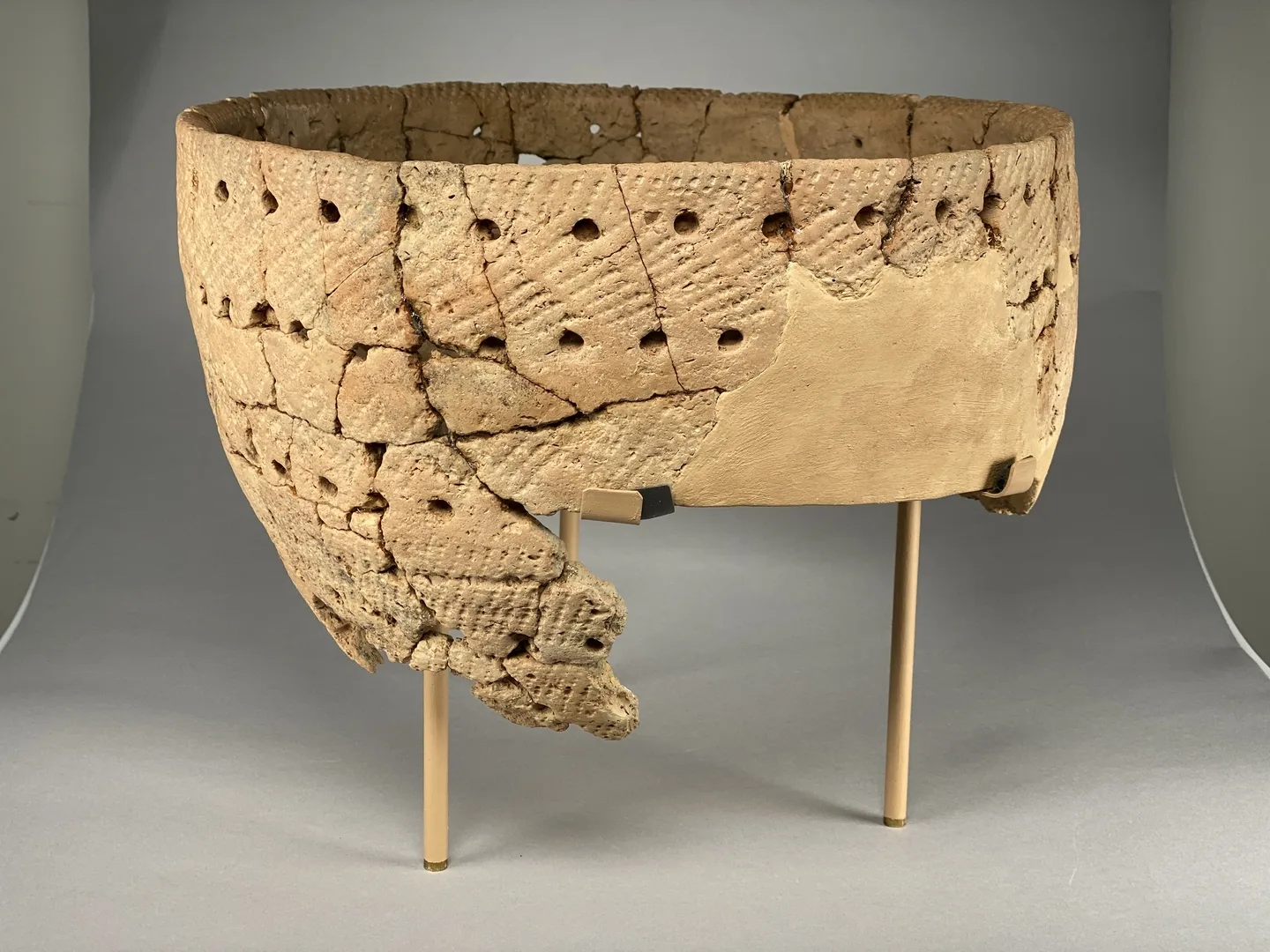
Comb Ware vessel
Megalithic tombs
Around 3500 BC, a new burial custom appeared in southern Sweden: the construction of monumental stone chambers known as megalithic tombs. Outside their entrances, archaeologists have often found large quantities of pottery.
This is typically classified as Middle Neolithic Funnel Beaker Pottery and dates to about 3300–2800 BC. The range of vessel shapes increased dramatically, with pronounced bellies, necks, and sometimes rims.
These were richly decorated with patterns arranged in horizontal and vertical zones. A wide variety of tools were used to imprint the designs into the clay. Funnel Beaker Pottery found away from megalithic tombs tends to be simpler in design, and it is primarily in the south and southwest that this pottery appears during this period. In the east and northeast, a different ceramic tradition emerged.
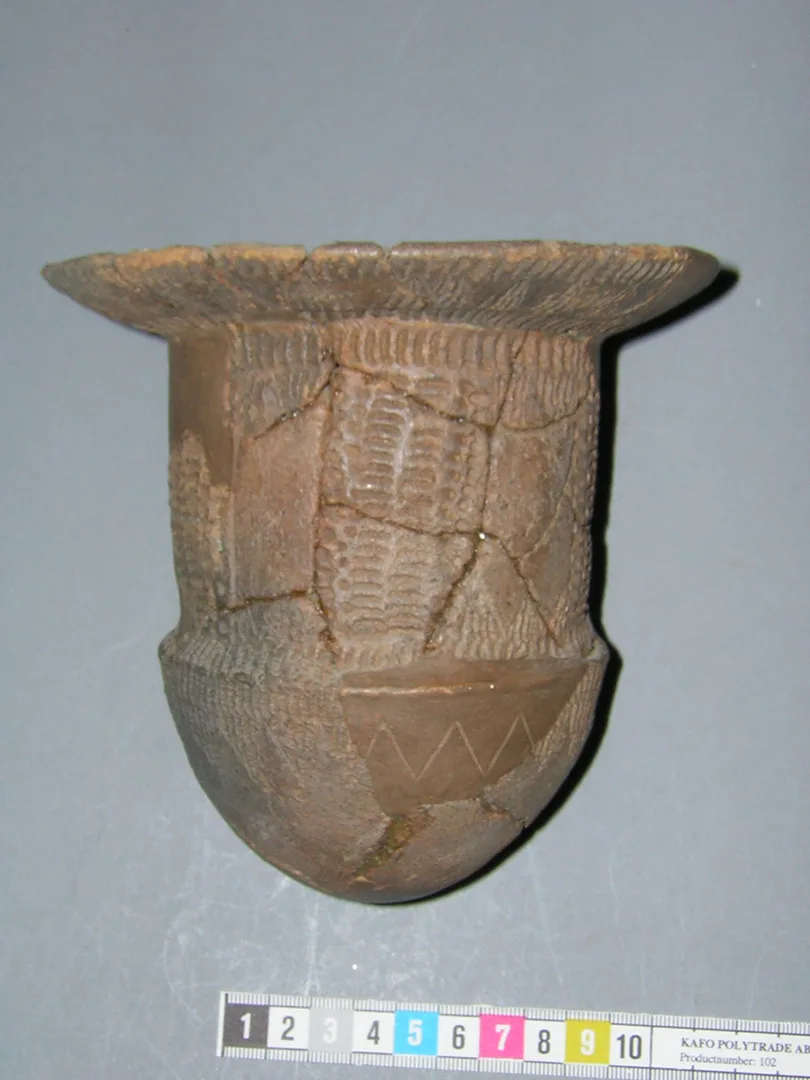
Vessel
Funnel Beaker from the Middle Neolithic Period
On view at Historiska museet in the exhibition Forntider 1
A new style in the east and northeast
In these regions, pottery design took another path. The most characteristic feature of this new style, known as Pitted Ware Pottery, is the round pit impressions that gave it its name. These finds are often referred to as belonging to the Pitted Ware culture.
The latest Early Neolithic Funnel Beakers can be difficult to distinguish from the earliest Pitted Ware Pottery, and they are often found together. Unlike earlier trends towards greater diversity, vessel forms now became fewer, with items like collared flasks and clay discs disappearing. Instead, conical vessels of varying sizes became common, from tiny miniatures to large storage jars.
Bases now included pointed forms reminiscent of Comb Ware, but Pitted Ware Pottery retained the shoulder marking the transition from belly to neck, though the necks were not as tall as those of Funnel Beakers.
The decoration was often fine and varied. Early vessels typically feature bands of impressions just below the rim, but later examples are more extensively adorned. A variety of tools were used to create the motifs, which often form horizontal rows.
Pitted Ware Pottery is commonly found in large quantities at coastal sites associated with human remains. These may be scattered bones, individual burials, or entire flat-ground cemeteries. Pitted Ware Pottery extended slightly further north than the Funnel Beaker culture and remained in use until the start of the Late Neolithic around 2300 BC.
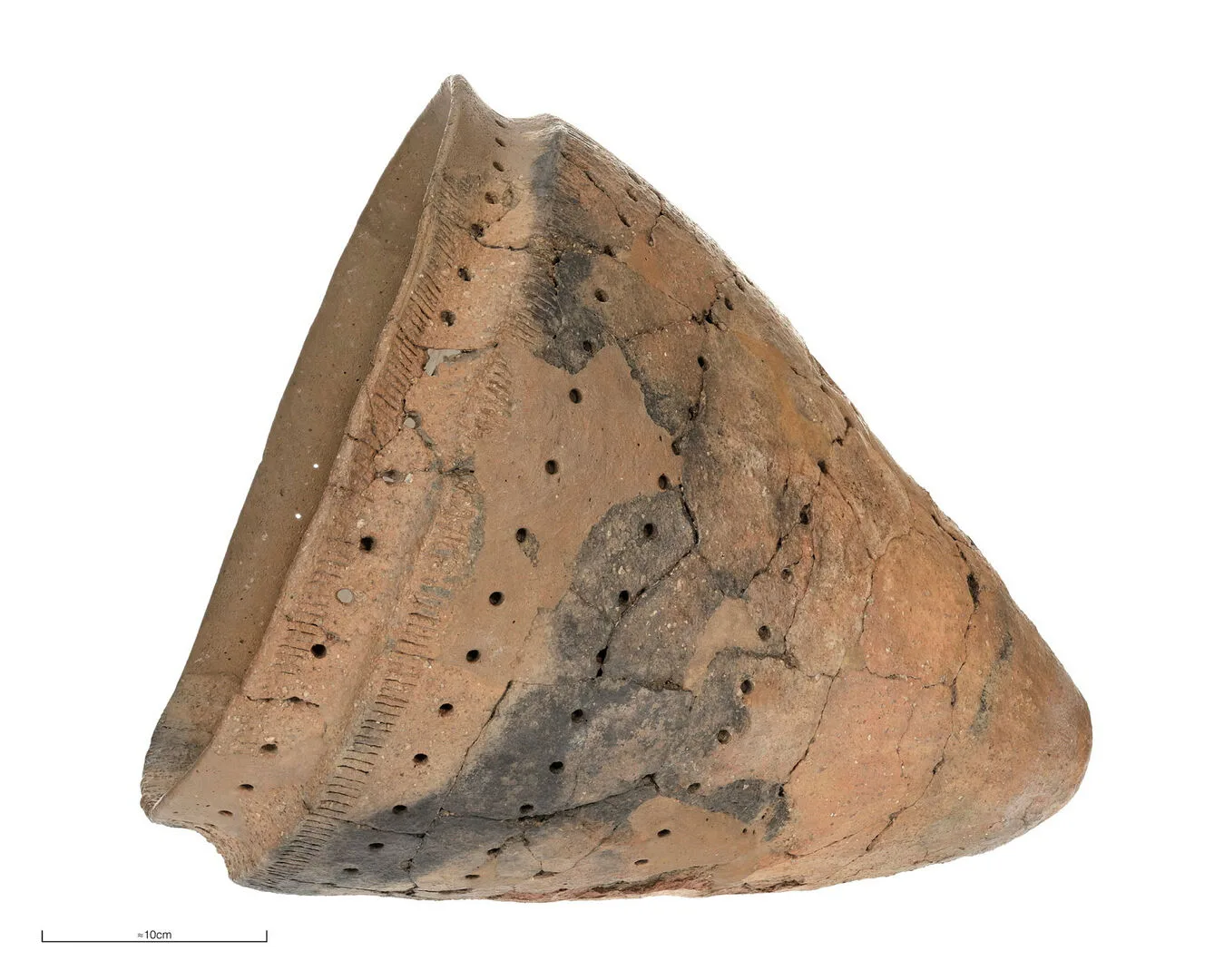
Pitted Ware vessel
From the Middle Neolithic Period.
A new tradition emerges
As Funnel Beaker Pottery disappeared and in regions where both it and Pitted Ware Pottery had been used, a new ceramic tradition emerged in the second half of the Middle Neolithic: Corded Ware pottery.
Corded Ware, dated to roughly 2800–2300 BC, often appears alongside Pitted Ware Pottery but is usually found in smaller quantities, often as isolated fragments except in graves, where entire vessels were placed. The range includes shallow bowls and larger bell-shaped vessels, though most are small, globular pots without shoulders and with flat or rounded bases.
Decorations appear near the rim, at the base, or across the entire surface. Patterns typically consist of straight or meandering lines and angled bands, impressed first with cord, later with comb stamps. Some vessels also feature finely decorated bases.
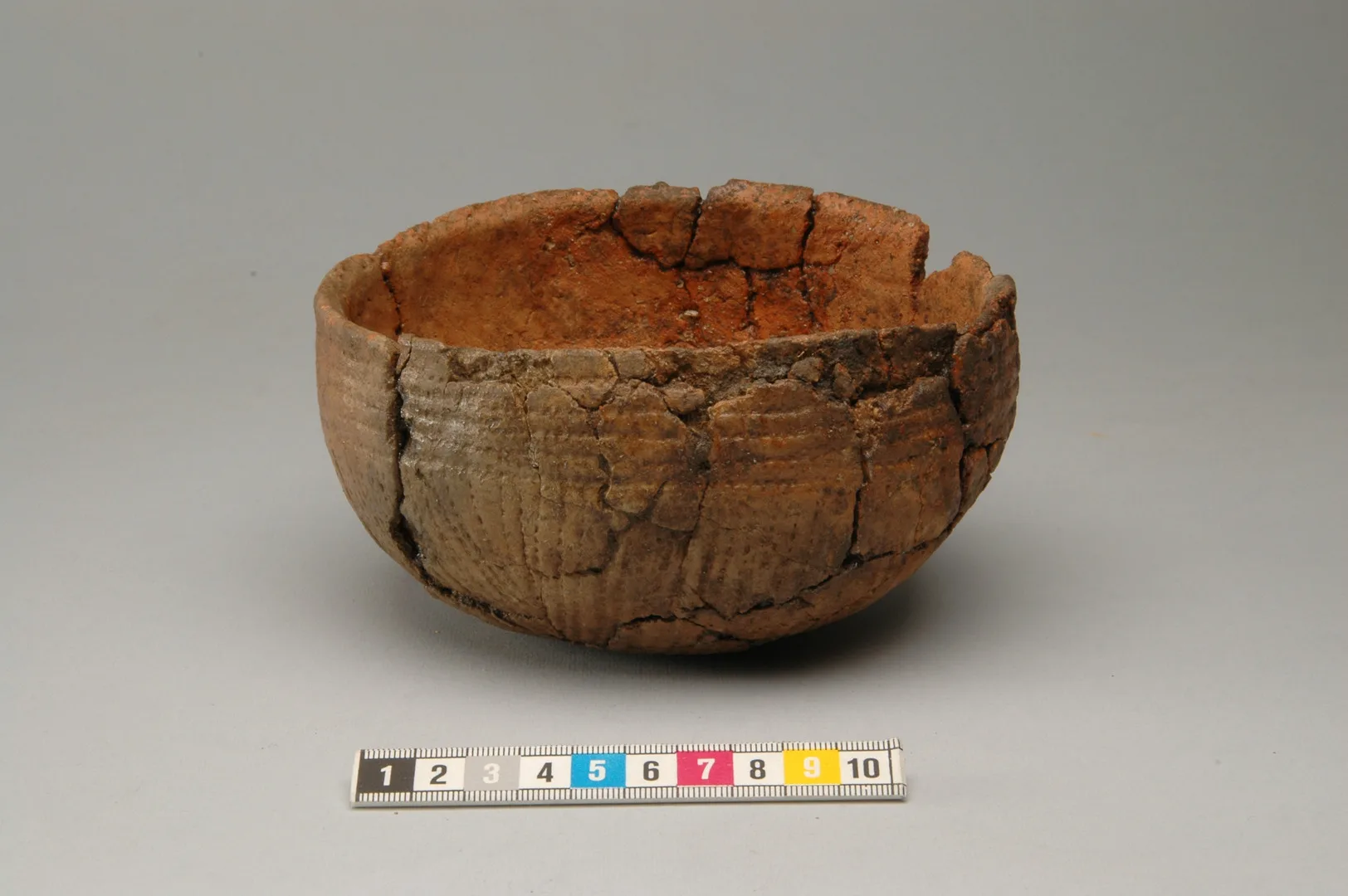
Corded Ware vessel
From the Middle Neolithic Period
Hybridity in times of change
The design of ceramic vessels, both in form and decoration, shifted continuously throughout the Stone Age. Craft traditions, social networks, and functional requirements all influenced pottery. When society, economy, or religion underwent change, ceramic design evolved in tandem.
What makes pottery particularly fascinating is that it reveals when such changes were underway. In moments of transition, we see the merging of ideas: hybridisation. This is especially evident in the shift from the Middle to the Late Neolithic, the very time when the house of the dead at Gläntan was constructed.
In eastern central Sweden, archaeologists have identified what they call the “Third Group”, a blend of traits from Pitted Ware Pottery and Corded Ware vessels. During the latter Middle Neolithic, ceramics and traces of farming also appeared further north along the coast of Norrland.
Some classify this northern pottery as part of the Third Group, noting similarities not only with Pitted Ware Pottery and Corded Ware but also with Kiukainen Ware, a Late Neolithic tradition from Finland.
Returning to Gläntan, it was indeed Third Group pottery that was found in one of the burial pits. Two of the vessels were standard Corded Ware types, but the third combined typical Corded Ware decoration with a row of deep pits in the style of Pitted Ware Pottery. In this vessel, we can sense the winds of change beginning to blow. It was in the Late Neolithic that the foundations of the Bronze Age society would begin to take shape.
